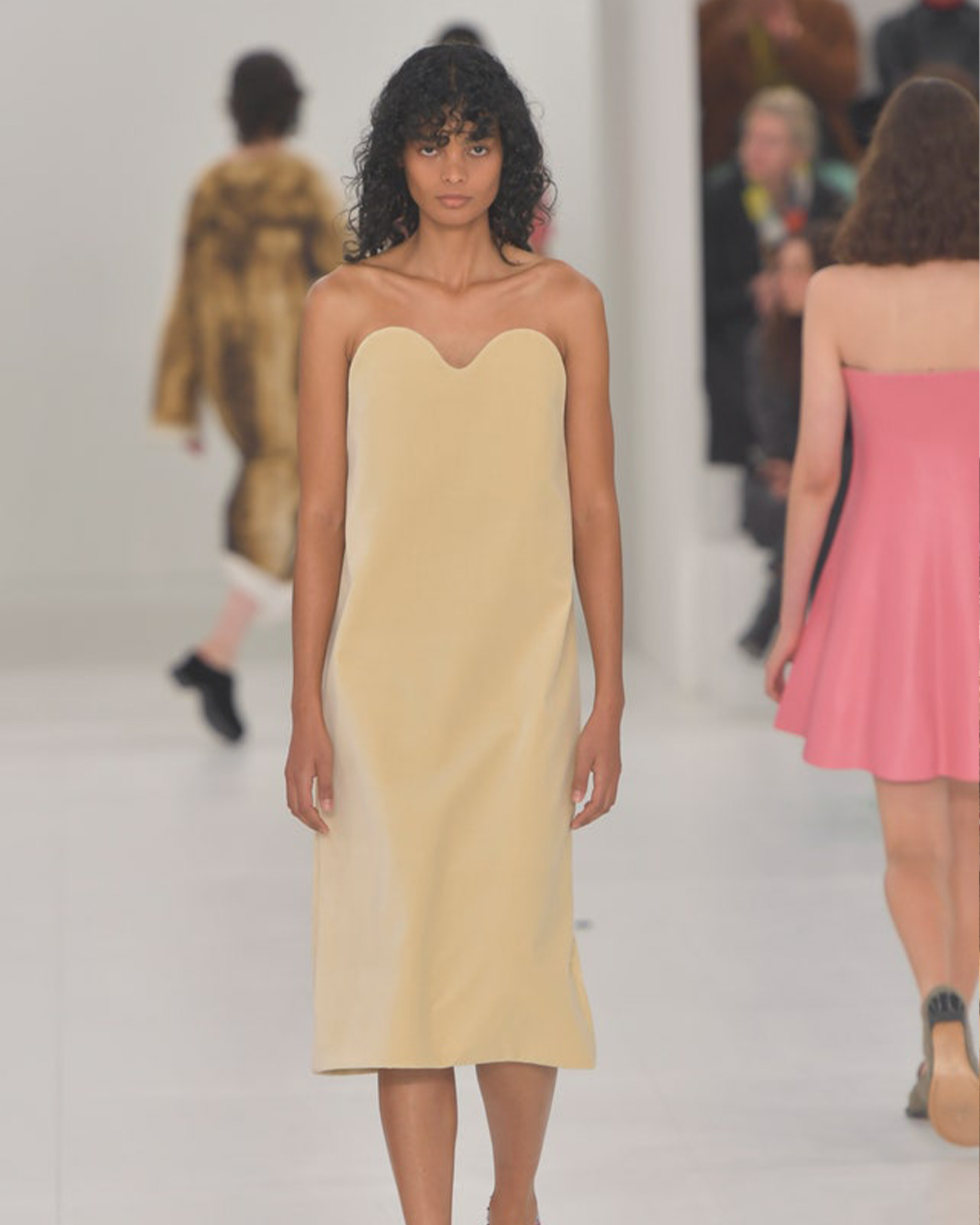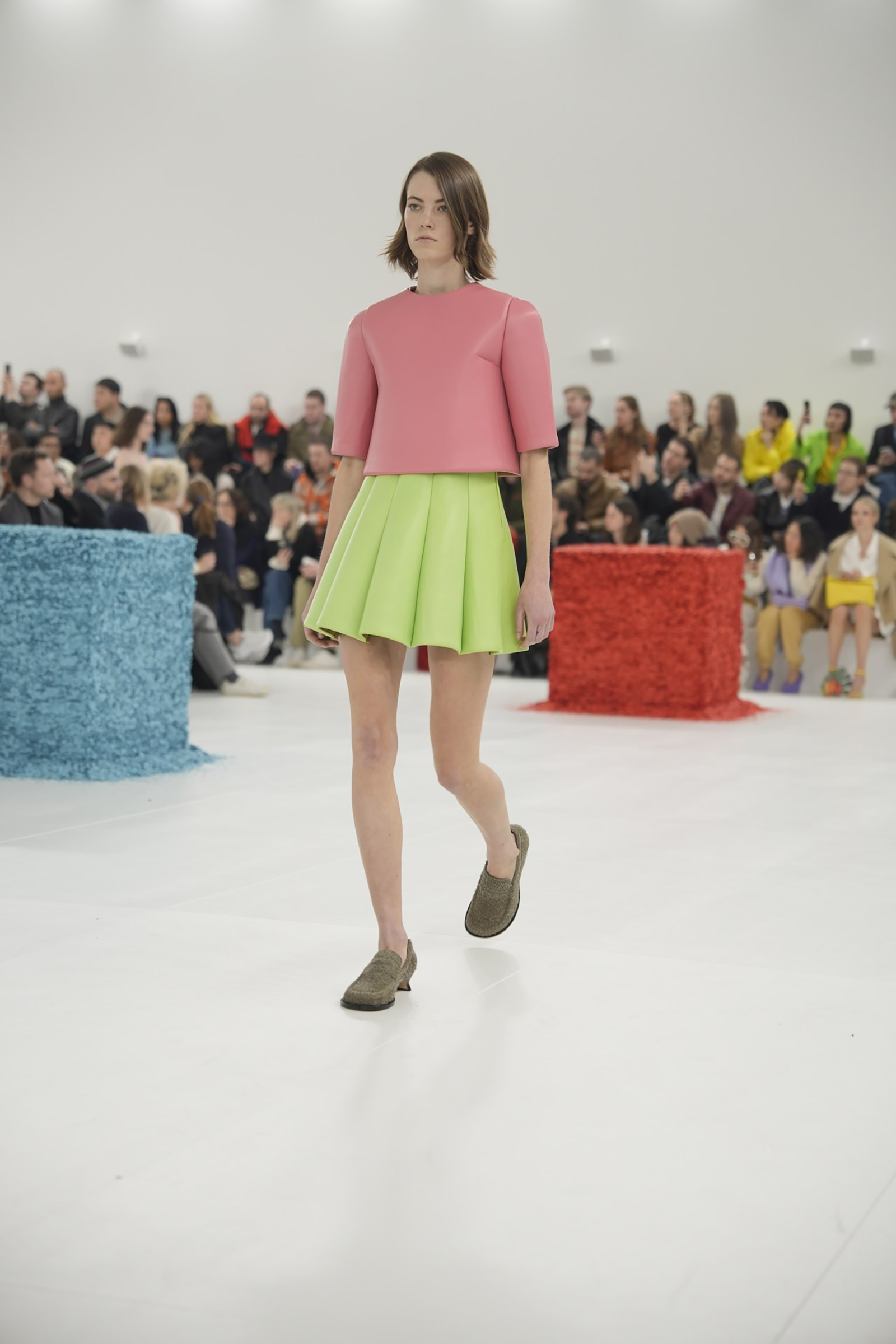From dresses printed with blurry motifs of antique garments, to cardigans that were actually stickers, Jonathan Anderson packed his fall-winter 2023 Loewe collection with illusions. Anders Christian Madsen reports from Paris Fashion Week.
-
Victor VIRGILE/Getty Images
It took place in Chateau de Vincennes
It was a typical fashion moment: after making the 45-minute drive to Chateau de Vincennes on the outskirts of Paris, the Loewe show took place in an isolated white box erected in its courtyard—not a turret in sight. “I like the idea that when guests arrive, you deal with the history. You have this history of a brand and suddenly you’re confronted by the white box,” Jonathan Anderson said after a show that dealt with themes of transiency and surrealism. Much of it was inspired by how differently live audiences experience a fashion show versus those watching online. As live guests, we knew we were in a castle. The digital audience would never have known.
-
Victor VIRGILE/Getty Images
It was packed with illusions
Anderson’s study of the ways we experience and consume fashion unfolded in several ways. Dresses inspired by the work of Gerhard Richter featured blurry motifs that, when seen from afar, would suggest a clarity to be found when viewed up close. But it was an illusion. “It’s the idea of a dress becoming out of focus. Fashion can become a bit of blur sometimes,” he said. Other dresses were printed with scans of antique garments that would have looked like an optical illusion from afar. Jumpers and trousers entirely made of feathers touched on the same idea. “My whole thing is the idea of looking at realities. In the room it looks like one thing, but we have an audience online that sees it in a different way,” Anderson explained.
-
Victor VIRGILE/Getty Images
It featured an installation by the Italian artist Lara Favaretto
Just as the online experience of watching a show can be deceiving, a garment you’ve seen on a screen inevitably reveals a slightly different truth when it arrives in the post. They’re somehow transient experiences. With that in mind, Anderson invited the Italian artist Lara Favaretto to create a set of confetti boxes inside his white cube. “They’re not stuck together, they’re just blocks of confetti that she stamps into a shape,” he said. “Then she removes the mould. I like the idea that things are transient: it’s a cube in the beginning but then starts to decay,” he said. It illustrated the process we continuously go through in fashion—the ephemeral nature of seasons and trends, and, you might say, the fashion system overall.
-
Victor VIRGILE/Getty Images
The knitwear was actually stickers
“Now that we consume imagery so quickly—and we’re kind of over shows before they’re even in store – my biggest obsession is how to make collections that are not for right now, but for in six months,” Anderson said. “I like the idea that the cardigan online will look like the cardigan, but in store, you will buy it as a sticker.” He realized that idea in cardigans that had been printed out on adhesive paper and stuck to the models’ bodies. “At Loewe, we always want to experiment with different things, but this one was a bit more purist. Reduction: simplifying the silhouette but at the same time still pushing the boundaries in terms of what can be done with clothing,” he said.
-
Victor VIRGILE/Getty Images
It was all about the coats
Anderson’s purist approach was typically abstract, but it also came with some simple proposals that were attractive in a more grounded way: handsome drop-shouldered leather coats, and an eroded oversized caban and brown crystal-encrusted coat that captured the purified elegance that’s been dominating the season. “There were moments in the show where I wanted this idea that she kind of breaks into a sensuality of the wardrobe, and moments where it becomes more withdrawn,” he said. He expressed the latter mood in a series of garments that evoked gestures like a child wrapping themselves in a blanket, or the draping of fabric over a nail on a door—transient things fixed in time. In fashion, as in life, nothing is as it seems.
This article was originally published on British Vogue.





